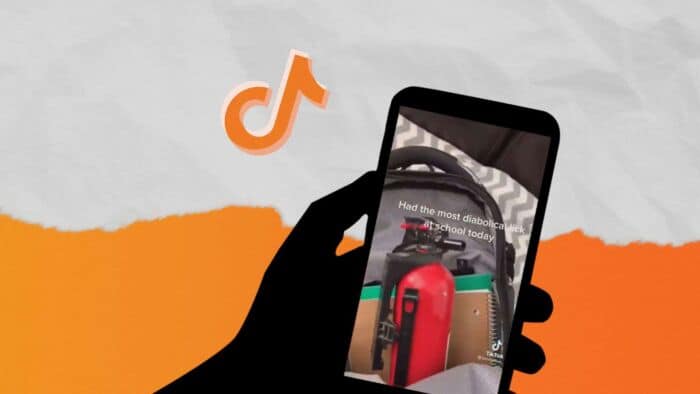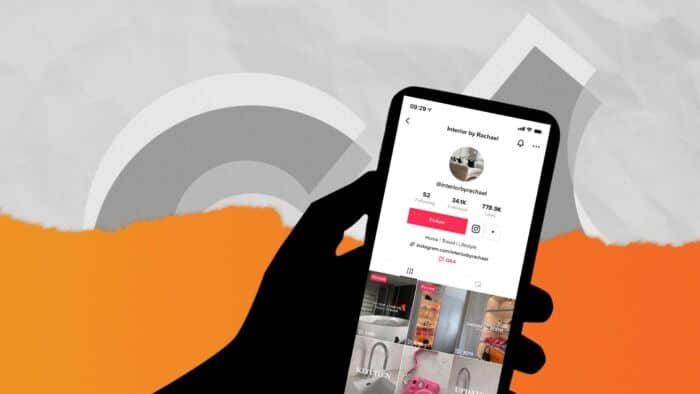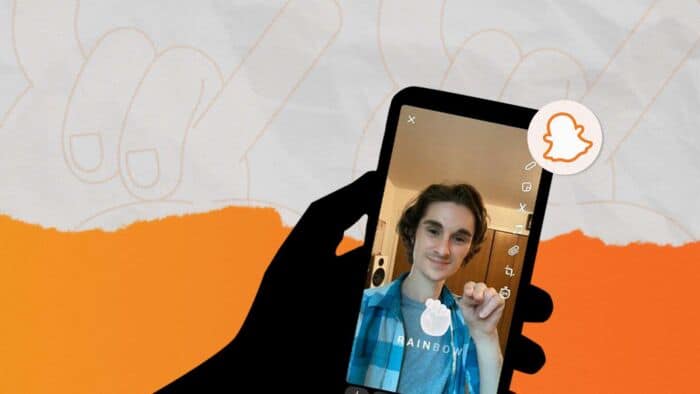In the latest edition of the Industry Round Up, we delve into the unlikely partnership between Fortnite and Balenciaga, and what this means for luxury fashion, as well as exploring emerging platforms that include Audius and Nebula. We also break down the Devious Licks challenge and how TikTok responded to this viral trend on the platform, whilst also covering the latest platform updates!
ByteDance Limits Usage On Douyin For Younger Users
TikTok is a platform known in Western markets as the leader for time spent in app. However, in recent news Douyin, which is the Chinese alternative to TikTok, has had restrictions set for kids by its parent company ByteDance.
Children under 14 are now required to use the app in “youth mode”, limiting younger users’ usage time to 40 minutes per day between the hours of 6 am to 10 pm. In the new “youth mode”, users will also be served more educational-focused content such as science experiments, so users can learn and be delivered quality content. This move comes off the back of the Chinese government putting restrictions on video games for children, which meant children under 18 were banned from playing video games on weekdays and allowed one hour of play on Fridays, Saturdays, Sundays and holidays.
Interestingly, users of Douyin, unlike its counterpart TikTok, do not have to be 13 years old to use the app – therefore, there is no minimum age limit to use Douyin. However, kids under 18 on Douyin have to use their full legal name and input further personal information to validate accounts, whilst also having permission from a parent to be on the app.
Fortnite x Balenciaga
Fortnite over the years has become more than just a game, pushing ever closer to developing a metaverse with players not just switching online for battle royales, but seeking out digital concerts and obtaining limited edition skins. The likes of Marvel, NFL, Travis Scott and Ariana Grande have all had crossovers with the game, catapulting Fortnite into a position of a cultural phenomenon, boasting over 350 million global players – which is more than most games that have been around for longer!
In a recent development, Fortnite has partnered with Balenciaga, bringing luxury fashion to the digital realm. Balenciaga has already experimented with the gaming market, replacing a runway show with a video game, and launching a PlayStation collection. However, this collaboration with Fortnite will see the fashion house release in-game skins and outfits all available in a virtual store. The partnership will also spill over into the physical world with limited-edition apparel and accessories, which are selling fast despite the expensive price range.
This partnership follows a growing trend of luxury fashion brands looking to capture the attention of younger demographics, with Gucci partnering with Snapchat for AR lenses and Louis Vuitton making YouTuber Emma Chamberlain an ambassador. Luxury brands are looking to get into the minds and hearts of younger consumers even earlier than ever before, as the data suggests that it is Gen Z that will soon have the majority of purchasing power, surpassing Millennials.
Nas & Pusha T Invest in Spotify’s Rival Platform, Audius
Music artists Nas and Pusha T are two of many investors in Audius, a startup streaming platform that Rolling Stone has pinned as the next rival to Spotify. At three years old, Audius is a new blockchain-based music streaming service built for all musicians, promising to give back power to the artists. The platform is owned and run by an open-source community of artists fans and developers, and has its own crypto token AUDIO. Already the platform has passed 5.3 million users as of July 2021 and is unique in the fact that artists and users can earn tokens through frequent use of the platform.
The likes of Spotify have experienced huge success over the years with the dominance and popularity of streaming and subscription-based platforms. Spotify might offer an affordable solution for users to listen to their favorite artists but often are reported to pay artists very little in return. Furthermore, the music streaming market is predicted to be worth around $37bn by 2030, so here lies an opportunity for rivals to enter – particularly those implementing solutions to put creators and artists first (like Audius plans to do).
Creator-Owned Streaming Platform On The Rise: Nebula
Nebula launched in 2019 as a creator-owned streaming service that is positioned as a place to experiment, explore and produce tailored content to specific audiences. The platform is a way fans can directly support their favorite creators through a monthly subscription which will provide access to exclusive content, with no pre-roll ads and no complex platform algorithm.
Nebula appears to draw upon the downsides of YouTube from both the creator and viewer’s perspective. For example, a huge issue at the moment, on YouTube, is subscribers missing recent uploads from creators, even when notifications are turned on. Furthermore, it feels like more and more ads are flooding the platform, causing users to turn to ad blockers to simply enjoy content uninterrupted. Ads on YouTube are also a notoriously unreliable source of revenue for creators, so offering subscription-based alternatives does serve as a better way fans can support creators, rather than sitting through a number of ad rolls that equate to very little ad revenue in the first place.
Nebula already offers videos from more than 100 creators, often videos are behind the scenes or duplications of videos already on YouTube – minus the ads. There are also Nebula Originals that are exclusive to the platform and produced by Standard, which is Nebula’s parent company, which essentially is a collective of digital video creators and other creators who bring about opportunities through collaboration.
Creators currently on Nebula include Marques Brownlee, Kat Blaque and Lindsay Ellis to name a few. Nebula is essentially owned by these creators, who are treated as shareholders, receiving 50% of profits from Nebula’s monthly subscription revenue and in any case of expansion eligible for 50% of revenue from a liquidity event.
In recent news, longtime content partner Curiosity Stream has seeded money into Nebula resulting in at least a $50 million valuation. Curiosity Stream will be taking a minority stake in Nebula, while creative and operational control will remain with Standard. Nebula will plan to use this new investment to build new features and launch a new business for creators and run marketing campaigns rather than relying on word of mouth from current creators. Nebula is yet another example of how creators are finding new opportunities to have better control of monetising their content, as more and more creators turn to subscription-based platforms.
TikTok Puts An End To The Devious Licks Challenge

The Devious Licks challenge has been going viral across TikTok, which involves content showing students stealing items from schools that are very random. Such items stolen include soap dispensers, exit signs or classroom phones, to name a few. The trend originated in September when a TikToker posted a video showing a stolen box of masks – the video naturally got millions of views before being removed by TikTok.
The challenge took off in schools around America, with high schools having to take action and discourage students from joining in on the trend – threatening arrests or suspensions. TikTok took the same opinion on the potentially dangerous nature of the challenge and decided to remove content and redirect hashtags associated with the trend – stating that it breached community guidelines.
This move is similar to that of the ban on the Milk Crate Challenge on the platform, which only last month was wiped from TikTok after users starting building stacks of milk crates and attempting to climb over – which often resulted in injuries.
TikTok’s Pin Clips To Top Of Profile Option

TikTok is testing a new option that will allow creators to pin selected video clips to the top of their profile. This option will enable creators to have better control over what content users see on profiles when they click over to an account.
Up to now, creators could create playlists to group together popular content themes which sat just below likes and bios. However, the new option of pinning videos will help to highlight specific clips on the top of video feeds to highlight viral or best-performing videos. In the past, if a creator was known for viral videos, looking for such clips in their feed could be near impossible due to the sheer volume of videos posted by one single creator. This new option will allow profile visitors to jump straight into top videos without endlessly scrolling – highlighting the best possible content to enable more followers to engage with the content out of the “For You Feed”.
In the initial test, it appears creators can pin up to three clips to make up the whole top line of feed displays on profiles. This new option could be great for spotlighting sponsored content, ensuring it stands out in a creator’s feed – becoming a premium placement option to maximize views and engagement.
Pinterest’s Facebook & Instagram Idea Pin Sharing Option
Pinterest’s Idea Pins is essentially the platform’s answer to Stories – without the 24-hour time cap. The feature has been a useful addition to the platform for those who want to benefit from a format with elevated levels of organic reach. However, in the latest test, it appears Pinterest is looking to further the value of Idea Pins through a direct sharing option to Instagram and Facebook Stories.
For users wanting to share their Idea Pin to Facebook and Instagram, they simply click on the option to send the Pin, which will pull up an option to choose the two social platforms. Idea Pin sharing could be a great way to bridge the gap between Instagram and Pinterest and deliver high-quality content as Idea Pins now provide users with greater editing capabilities. The share feature will also automatically add a Pinterest watermark, helping to raise awareness of your Pinterest platform through other channels.
Snapchat’s Sign Language Lens

Snapchat has launched a new lens to teach users sign language throughout International Week of the Deaf.
As explained by Snapchat:
“Using SignAll’s AI and computer vision technology that recognizes and translates American Sign Language language, these AR Lenses will inspire Snapchatters to fingerspell their name, as well as other common words like ‘love,’ ‘hug,’ and ‘smile’.”
Snapchat worked with its own hearing-impaired employees to develop the lens and hopes to further inclusivity efforts on the platform. The idea here is to get creators on the platform to also consider how they can better communicate to those with hearing impairments on Snapchat.
To support the launch of the new lens, Snapchat also developed new Bitmoji stickers to further awareness of International Week of the Deaf. Snapchat has been a platform looking to better represent different fractions of the disabled community, only earlier this year releasing Bitmoji wheelchair stickers. However, social platforms on the whole still have a long way to go to better cater for disabled communities, particularly when developing new features, with the likes of Twitter failing to consider deaf users on the launch of audio tweets.





